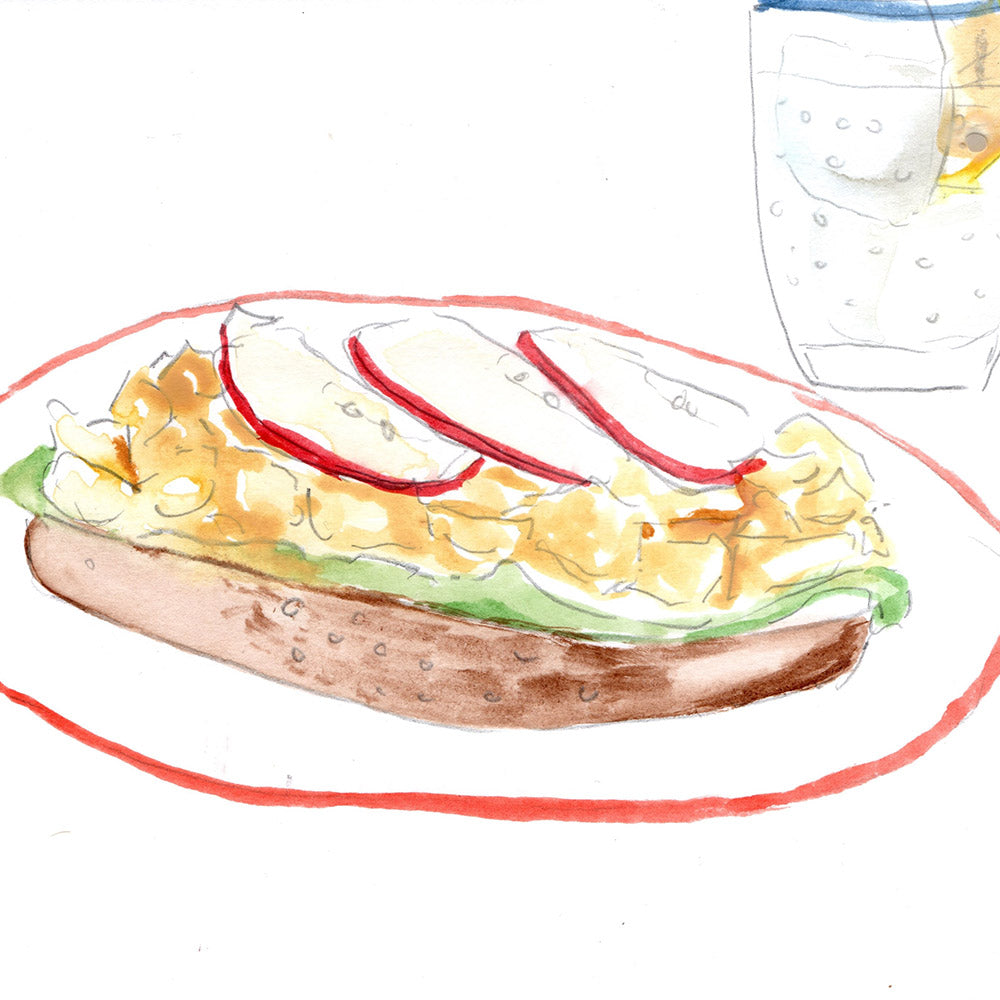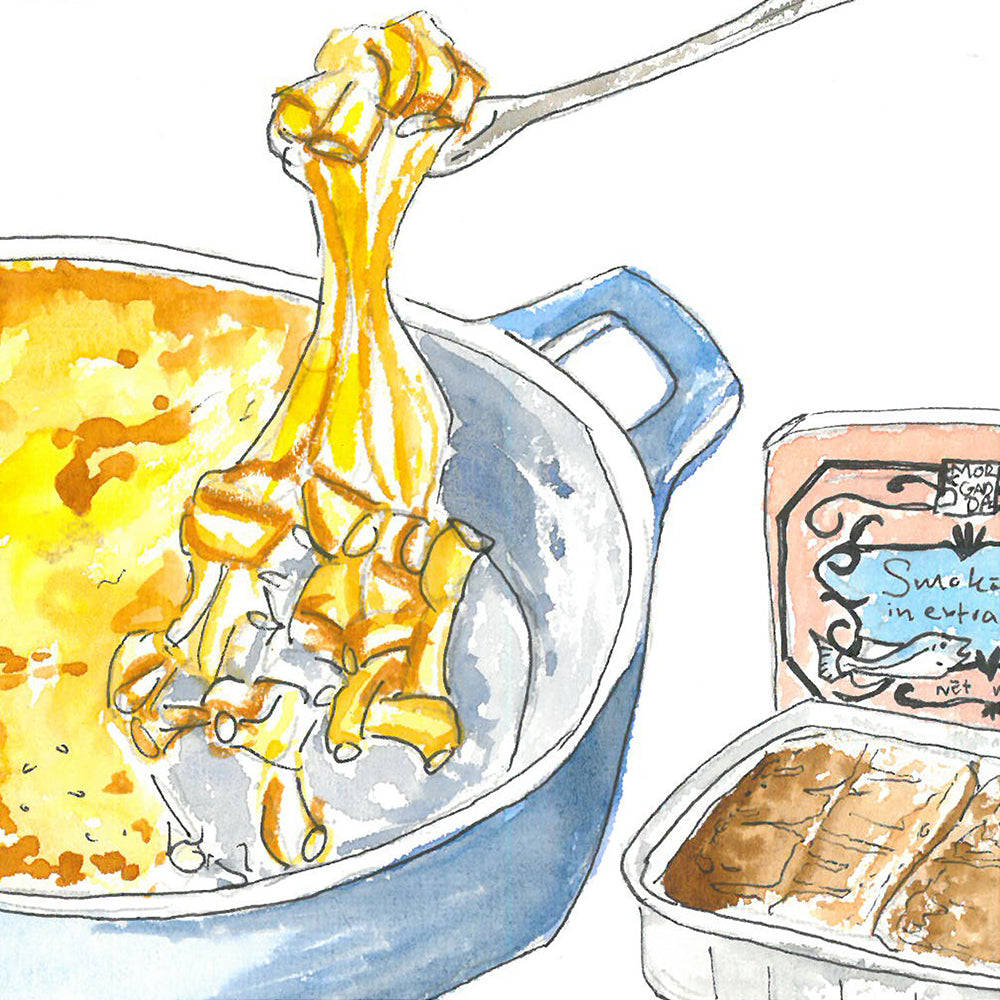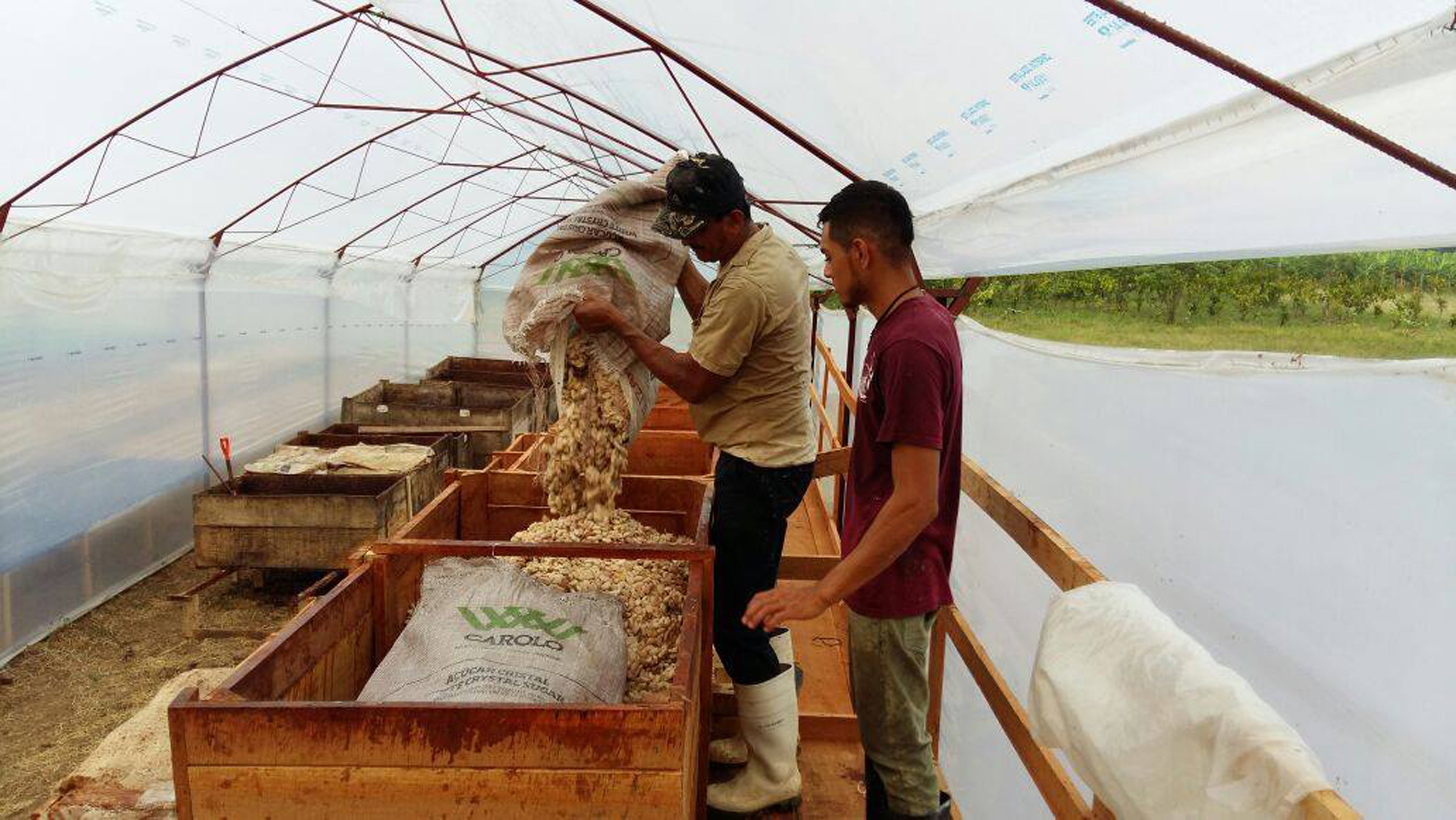The cultivation of cacao into delicious confection is a process steeped in refinement. From the way cacao farmers tend their land to how they pick their beans speaks volumes about the type of confection they wish to produce. Needful consideration is given to the land they cultivate on, the fermentation and drying processes, the social impacts on hardworking communities, and the fostering of a familial atmosphere where people can work towards a common goal and support each other along the way. But perhaps the most important factor to consider is that which begins the journey of a thousand miles with a single step – What bean should one choose to achieve the perfect confection?
Cacao Trees
The best place to start when discussing cacao cultivation and the steps taken to achieve the perfect confection is right at the beginning - and not just the beginning of the process, but the beginning of cacao agriculture itself.
The Theobroma cacao, otherwise known as the cacao tree, is believed to have originated millions of years ago. The origin of the cacao tree for mass cultivation started in the Amazon basin and its domestication began with the Olmecs. Throughout Mesoamerica and the civilizations that postdated the Olmecs, the cacao tree and the fruit it bore became seen as a cherished luxury, seen as a divine treat and was even used as currency among Mesoamerican societies. The name Theobroma was first given to the cacao tree by Carolus Linnaeus, the father of modern-day taxonomic plant classification, and borrows from the ancient Greek to mean ‘Food of the Gods.’ Other interpretations of the language surrounding chocolate continue to illuminate its historic roots as the word chocolate is derived from the Mayan ‘chocolhaa’ which translated into English as ‘bitter water’ as the indigenous people in the Mesoamerica region once ground the cacao beans and added water to make a drink that left them at once stimulated and refreshed. The word cacao for the bean itself is also of Mayan origin as the Mesoamericans called the fruit ‘KaKaWa’ and believed it to come from their god Kukulkan (Feathered Serpent). It wasn’t until the Spanish conquistadors caught wind of the word and altered its makeup to suit their tongue that KaKaWa became the cacao we know today.
The Theobroma cacao and the bean it bares grow in hot climates but in shaded conditions. The fruit when fully grown is almost the length of a standard ruler and resembles an American football. Its shell is thick and takes on an almost yellow, greenish, reddish hue. In the center of the fruit, there is a white, sweet pulp and anywhere from twenty to fifty seeds arranged in five rows can be found. Each seed is approximately 2-3 cm long and covered in a white mucus. The flavor profiles of the beans can vary from climate to climate but the three major species of cacao beans used in confection today include the Criollo, Forastero and Trinitario – and depending on the species of bean, the quality of confectioner’s chocolates can vary greatly.
Cacao Beans - Criollo, Forastero and Trinitario
In Spanish, Criollo means ‘of local origin’. The reddish bean is considered to be the highest quality among the three most predominant cacao bean varieties and has an equally distinctive taste that can include flavours of caramel, nuts, vanilla, and tobacco. The bean is renowned for its aromatic characteristics and its distinct lack of bitterness cements the confection as a nuanced treat. The Criollo is mainly used in luxury chocolates, and due to its scarcity, can run quite a number in terms of cost.
The scarcity of the bean and the reason for its expense comes down to the sensitive nature of the Criollo tree and the plant’s inability to withstand disease and adverse weather conditions. Truth be told, the Criollo bean represents only 1-5% of the cacao population cultivated today. The tree is native to Venezuela and Colombia but is also grown in Mexico, Peru, Madagascar, Sri Lanka, and the Caribbean. The Criollo trees we know of today, although still considered the highest quality of the three bean varieties, are thought to be distant relatives of the Criollo trees that were found in abundance two hundred years prior; less pure and considered to be an amalgamation of other cacao tree varieties of higher yield. The most important Criollo trees of today, the Ocumare 61 and Chuao, are both found in Venezuela and benefit from the terroir in which they’re produced. The Criollo beans from this region produce yields with unique flavor profiles, their nutty, fruity taste with just the right amount of bitterness sought after worldwide. The world of cacao production has much in common with the wine trade, as flavor profiles change from region to region, even within the same variety of cacao bean. If one was to be curious enough to test their palate, I imagine there would be subtle flavor combinations and distinct tastes that only embolden your love for chocolate. Using your preferred metaphor, be it wine or coffee, one could consider the Criollo bean to be the arabica of the chocolate world, and where there is an arabica, there must be a robusta, which brings us to the Forastero bean varieties.
In Spanish, Forastero means ‘foreigner’. This distinction in name when compared to Criollo (of local origin) stems from the fact that the Spanish first imported the Criollo from Venezuela, and regarded the bean to be the original variety of cocoa. The Forastero that came years later was seen as an earthier and simpler alternative when compared to the more nuanced Criollo. The Forastero is the staple of modern chocolate production, its bolder flavor, faster farming, higher yields, and disease resistance have seen the variety seize 85% of cacao production today. The trees that originated in the Amazon basin can now be found throughout Brazil, Ecuador and Africa, supporting local farmers and providing vital support for agricultural communities that otherwise might struggle to make ends meet.
But while the Forastero with its more intense taste and industrial appeal has long been seen as a lesser variety compared to Criollo, when we look upon our next variety - that of Trinitario - we see where the tree's hardier stature comes along to save the day.
Forastero’s connection to Trinitario cacao dates back to the 18th century. The island of Trinidad had been devasted by a hurricane – or perhaps widespread blight – and reeling from the effects of the agricultural disaster on their Criollo crop, a group of planters travelled to South America and gathered enough Forastero seedlings to replace their wilting lots. The farmers, believing the old plots were dust, laid the Forastero seeds between the scorched patches of previous yields, and were amazed to see that not only did the Forastero trees grow in the damaged land, but they actually linked with the previous Criollo roots to create something altogether different. The new seeds and the old roots had combined to produce a hybrid of both – known today as Trinitario.
Trinitario is a delicate-tasting cacao that retains the bold Forastero aroma while adopting the nuance and subtle flavor profile of the Criollo. The Trinitario has elongated fruits, meaning that even though it possesses flavor profiles similar to the Criollo bean, it is more durable and less susceptible to disease than its sensitive ancestor. Trinitario also benefits from being less pure than its predecessors - as the lack of Forastero harshness and Criollo refinement means Trinitario is more versatile; capable of taking on more flavor profiles and adapting to assorted ingredients without losing its distinctive taste. The Trinitario represents about 10-12% of cocoa production worldwide. The spread of the varietal from Trinidad to Ecuador, Samoa and more locations in the 19th Century allowed for Trinitario to become interpreted in new and unique ways - as each new soil and ratio of Criollo to Forastero imbued the confection with a fresh personality. Trinitario from Venezuela is noticeably bright with more pronounced cacao notes while Trinidadian Trinitario is celebrated for its fruity and nutty attributes. But what of the Trinitario from Nahua in Costa Rica – and how does their confection match up to the aforementioned flavor profiles?
Nahua Chocolate Factory
The name Nahua is derived from the indigenous groups of Nahua people who lived in the Mesoamerican region for at least five thousand years. The indigenous group were celebrated for their rich culture and artistic expressions of dance, poetry, and music. The skillfulness and care attributed to Nahua jewellery and the vividness of their paintings reflected their ardour for life and all that sprang from the soil. The indigenous group were known for their agricultural pursuits and traded copious amounts of corn, beans, and cacao, furthering the agrarian pursuits of the time until modern day – when their namesake was adopted by craftspeople who carry their spirit in all they do.
The Nahua of today are the leading producers of fine cocoa, striving to perfect their agricultural prowess while remaining attentive to the select group of local planters who nurture the crop until refinement. The single-origin Trinitario beans that are collected post-harvest have their freshness preserved in the specially designed fermentation centre in Upala, Costa Rica. The fermentation process of cacao – again akin to great wines – sees yeast and bacteria break down and create sugars and alcohols that comprise the flavor profiles of the finished confection. During the fermentation process the rich aromas, bold flavours, and distinct colours of delicious cacao come into bloom. The first stage of fermentation sees natural yeast convert sugars found in the cacao pulp into alcohol. The bacteria then oxidizes the alcohol into acetic acid. The beans are stirred and aerated and the process continues until the desired result is achieved.
In the Nahua fermentation centre, the process is controlled and monitored to ensure the beans reach their full potential and lose none of their characteristic flavor. Nahua utilize stacked wooden boxes, each one adhering to strict dimensions, in which the beans ferment through anaerobic and aerobic protocols. During box fermentation the beans placed in the first wooden box ferment on account of the sticky white mucilage that covers the beans, providing sugar for fermentation to come. The beans are contained inside the holed wooden box – the holes allowing for drainage and aeration – until the yeast and pulp are transformed into alcohol and carbon dioxide. The temperature inside the bean during this phase will start to increase and lactic acid will begin to form, and as the pulp begins to disintegrate, air will start to penetrate. This is when the aerobic phase commences and the growth of healthful bacteria transforms the alcohol produced into acetic acid. The temperature will then rise once again and the germ inside the cacao bean dies from the heat, alcohol, and acetic acid. When the bud dies, chemical changes begin as enzymes within the bean are released, culminating in the chocolate we will soon enjoy!
The Trinitario beans that Nahua achieves are strong with cacao flavor, balancing a combination of yellow fruit, red berry and caramel. The acidity is medium to low and represents the rich flavor that is to be expected of Costa Rican confection. The Trinitario chocolate bars produced are faithful to the bean’s ability to embrace interesting flavour combinations, as Nahua experiments with assorted nuts, fruits, and spices to bring out the best of their dark chocolate while their milk chocolate shines with the perfect blend of cacao, cacao butter, and whole milk powder, fortified with entirely natural ingredients. From bean to bar, Nahua ensure that no step in their meticulous process goes unmonitored to achieve a premium blend!
The Nahua Way of Making Chocolate
Nahua Chocolate in Costa Rica has done their due diligence in selecting the perfect bean to complement their broad ambitions. The flavor combinations they achieve in their milk and dark chocolates celebrate and elevate the Trinitario varietal of cacao, showing that the willingness to take chances often results in grand outcomes. Their dedication to the land and those who work upon it sees sustainable relationships flourish, as people who work together and with the planet can achieve a wild inertia that wouldn’t otherwise be possible in one-sided endeavors. Nahua Chocolate – much like their prized bean – benefits from synergies, bringing the knowledge and expertise of their own experience and combining it with those who tend the land and the land itself to create something perfected in refinement – the many important steps that make up the great journey steeped in important decisions along the way.



